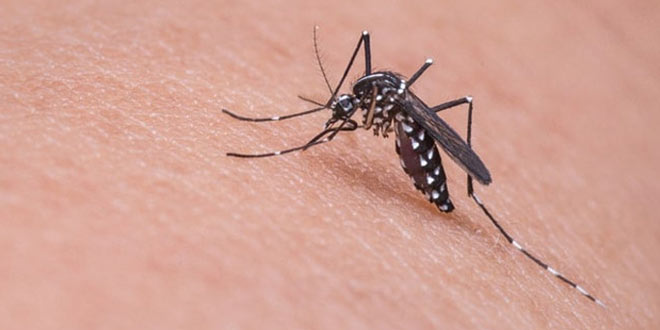
Vector-borne diseases and ways to prevent them
Vector-borne diseases are those that are transmitted to humans through the bite of infected arthropods, such as mosquitoes, ticks, and fleas. These diseases are a significant public health concern in many parts of the world, including developing countries. The World Health Organization estimates that vector-borne diseases account for more than 17% of all infectious diseases globally, causing over 700,000 deaths annually. In this article, we will discuss the different types of vector-borne diseases, their symptoms, and ways to prevent them.
Types of Vector-borne Diseases
There are several types of vector-borne diseases, including malaria, dengue fever, Lyme disease, West Nile fever, Zika virus, and Chikungunya. Let’s take a closer look at each of them.
Malaria: Malaria is a life-threatening disease that is caused by the Plasmodium parasite. The parasite is transmitted to humans through the bite of infected Anopheles mosquitoes. The symptoms of malaria include fever, chills, headache, and vomiting. Malaria can be prevented by taking anti-malarial drugs, using insect repellents, and sleeping under mosquito nets.
Dengue Fever: Dengue fever is caused by the dengue virus, which is transmitted to humans through the bite of infected Aedes mosquitoes. The symptoms of dengue fever include high fever, severe headache, joint and muscle pain, and rash. There is no specific treatment for dengue fever, but the symptoms can be managed through rest and the use of pain relievers. Prevention measures include using mosquito repellents and removing stagnant water from around homes.
Lyme Disease: Lyme disease is a bacterial infection that is transmitted to humans through the bite of infected blacklegged ticks. The symptoms of Lyme disease include fever, headache, fatigue, and a characteristic skin rash. Lyme disease can be treated with antibiotics, and prevention measures include wearing protective clothing when in wooded areas and using insect repellents.
West Nile Fever: West Nile fever is caused by the West Nile virus, which is transmitted to humans through the bite of infected mosquitoes. The symptoms of West Nile fever include fever, headache, body aches, and joint pain. There is no specific treatment for West Nile fever, but the symptoms can be managed through rest and the use of pain relievers. Prevention measures include using mosquito repellents and removing stagnant water from around homes.
Zika Virus: Zika virus is transmitted to humans through the bite of infected Aedes mosquitoes. The symptoms of Zika virus include fever, rash, joint pain, and red eyes. Most people with Zika virus have mild symptoms, but the virus can cause serious birth defects in pregnant women. There is no specific treatment for Zika virus, but the symptoms can be managed through rest and the use of pain relievers. Prevention measures include using mosquito repellents and removing stagnant water from around homes.
Chikungunya: Chikungunya is caused by the chikungunya virus, which is transmitted to humans through the bite of infected Aedes mosquitoes. The symptoms of chikungunya include fever, joint pain, headache, and rash. There is no specific treatment for chikungunya, but the symptoms can be managed through rest and the use of pain relievers. Prevention measures include using mosquito repellents and removing stagnant water from around homes.
Ways to Prevent Vector-borne Diseases
Preventing vector-borne diseases requires a multi-faceted approach. Here are some ways to prevent these diseases
Use Insect Repellents: Using insect repellents is one of the most effective ways to prevent vector-borne diseases. Repellents that contain DEET, picaridin, or IR3535 are recommended. These repellents should be applied to exposed skin and clothing.
Wear Protective Clothing: Wearing protective clothing, such as long-sleeved shirts and pants, can help reduce the risk of being bitten by mosquitoes, ticks, and fleas. Light-colored clothing is recommended, as it is less attractive to these insects.
Eliminate Stagnant Water: Mosquitoes breed in stagnant water, so it is important to eliminate any standing water around your home. This can include removing water from flowerpots, old tires, and other containers.
Keep Your Home Clean: Keeping your home clean and tidy can help reduce the number of hiding places for mosquitoes and other insects. Make sure to regularly clean up any debris or clutter in your yard, and keep your gutters clean to prevent water from accumulating.
Use Mosquito Nets: Sleeping under a mosquito net can provide an extra layer of protection against mosquitoes while you sleep. Make sure to properly hang the net and tuck it under your mattress to prevent mosquitoes from entering.
Get Vaccinated: Some vector-borne diseases, such as yellow fever and Japanese encephalitis, can be prevented through vaccination. Make sure to check with your healthcare provider to see if you need any vaccines before traveling to areas where these diseases are common.
Be Aware of Peak Mosquito Activity Times: Mosquitoes are most active at dawn and dusk, so it is important to take extra precautions during these times. This can include wearing long-sleeved clothing, using insect repellents, and staying indoors if possible.
Conclusion
Vector-borne diseases are a significant public health concern, and it is important to take steps to prevent these diseases. Using insect repellents, wearing protective clothing, eliminating stagnant water, and keeping your home clean are all effective ways to reduce the risk of being bitten by mosquitoes, ticks, and fleas. By following these prevention measures, you can help protect yourself and your family from these dangerous diseases. If you suspect that you have been infected with a vector-borne disease, make sure to seek medical attention right away.
Visit DocMode for Courses and lectures










